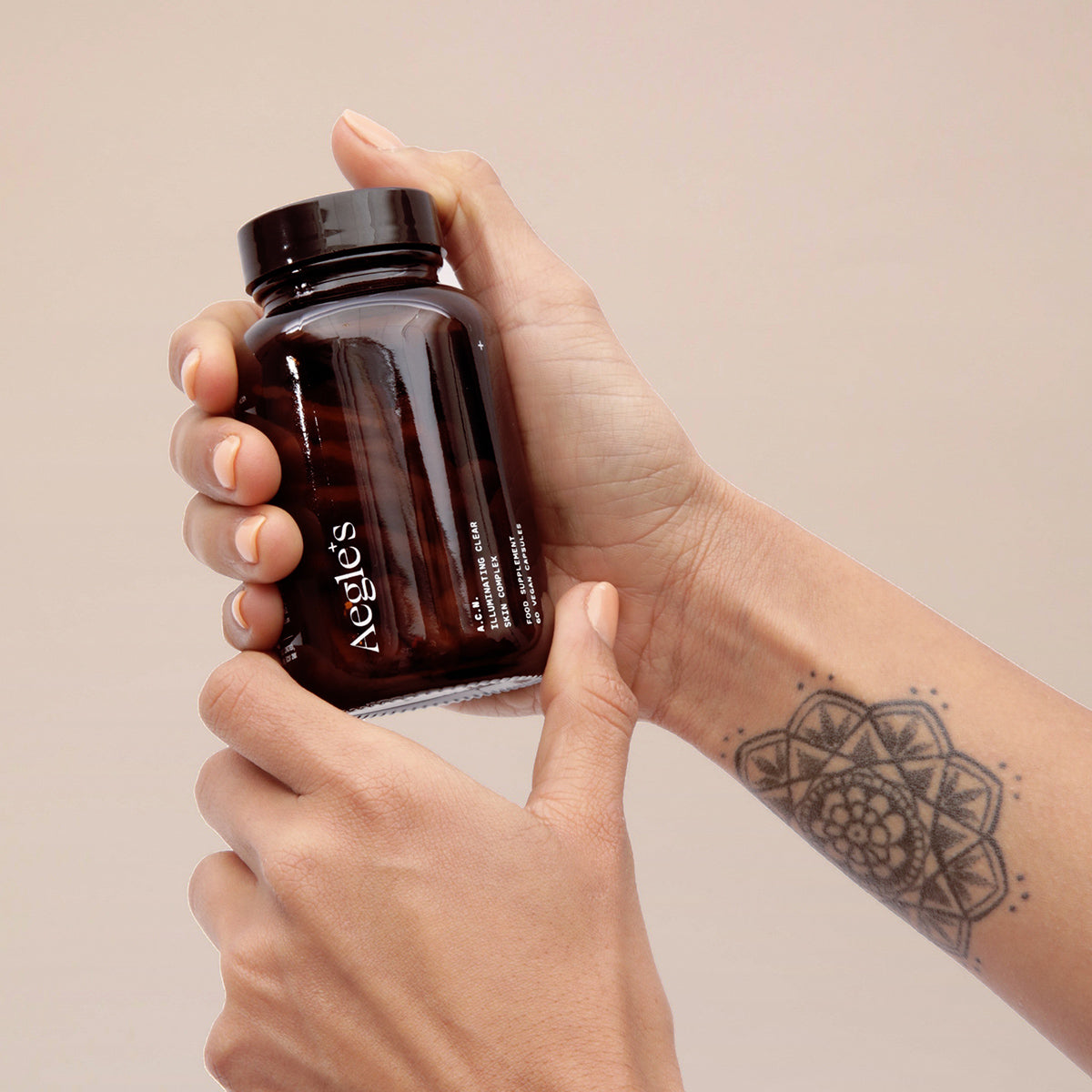Hormonal birth control is one of the most common pharmaceutical treatments for hormonal acne in women.
But for some women, hormonal birth control can be the cause of their acne. This article explains why and how.
What is hormonal birth control?
There are many different types and methods of birth control. This article is focused solely on hormonal methods, such as:
- The birth control pill (including the minipill)
- Hormone releasing intrauterine device (IUD)
- The birth control implant
- Birth control injections
- The transdermal contraceptive patch
- The birth control ring
How hormonal birth control works
Each of the methods of hormonal birth control work in slightly different ways, but they all release synthetic hormones into the woman’s body. In this way, they are acting to influence a woman’s natural hormonal levels.
The result is they either prevent ovulation from happening, or prevent fertilised eggs from being implanted in the womb. Some also alter the consistency of the cervical mucus by making it more difficult for the sperm to reach and fertilise the egg.
Some hormonal birth controls release both progestin and ethinyl estradiol, and some just progestin alone.
Progestin
Progestin is a synthetic form of progesterone. It works to prevent pregnancy by:
- Thinning the lining of the uterus
- Thickening cervical mucus
- Preventing ovulation in some women
Progestins are well known to cause hormonal acne, as breakouts are one of the common side effects of using a progestin-only or low-estrogen pill.
In the past, progestins had strong androgenic properties. This meant they were able to cause breakouts by raising the levels of acne-causing dihydrotestosterone (DHT).
Newer forms of progestin have lower androgenic properties so are less likely to be the sole cause of hormonal blemishes. However, if a woman already has elevated levels of DHT, then it’s likely that the progestin in the pill will raise her DHT levels even more and then contribute to her acne.
In addition, as progesterone helps to regulate healthy sebum production, with less natural progesterone in her system, a woman is more likely to experience an overproduction of sebum and therefore acne.
Ethinyl Estradiol
Ethinyl estradiol is the synthetic form of estrogen in most hormonal birth control. It works to prevent pregnancy by:
- Preventing ovulation
- Thickening cervical mucus
Ethinyl estradiol is the component in some hormonal birth controls that can help to clear acne. It does this by reducing the levels of 5-alpha reductase (5AR), which in turn lowers DHT levels.
However, the content of ethinyl estradiol in the birth control needs to be quite high in order to clear acne. The danger with higher levels of ethinyl estradiol is a potential for more severe side effects such as blood clotting.
It is also important to note that women whose skin clears from the DHT-lowering effects of ethinyl estradiol in the birth control, often experience a return or worsening of their acne once they come off the birth control. This is because the underlying root cause has not been addressed or rebalanced.
Birth control and hormonal imbalances
Dependant on the type of birth control, a women’s natural hormonal system may be altered in the following ways:
- Lowering of progesterone, luteinizing hormone, follicle-stimulating hormone and total testosterone
- Elevation of sex hormone binding globulin (SHBG)
How coming off birth control can cause breakouts
On average it takes a woman’s body about three months to adjust back to its natural hormonal state after coming off a form of hormonal birth control.
It is for this reason that it’s common for women to experience a sudden breakout or worsening of her acne exactly three months after stopping birth control.
As the synthetic hormones leave the woman’s body, her natural levels of progesterone, luteinizing hormone, follicle-stimulating hormone, total testosterone and SHBG will begin to normalise.
Whilst for many women their hormonal system will naturally go back into a healthy balance, for some women their levels of progesterone may not completely return to healthy levels. For others their DHT levels may remain high. And for some, they may find that the synthetic estrogen in their body is contributing to estrogen dominance. All of these imbalances can cause acne.
These women may need supplementary and dietary assistance in order to assist their hormonal system to return back to normal and healthy levels after discontinuing use of the birth control.
The best diet to balance hormones post birth control
The best diet to help to return healthy hormonal levels is identical to the diet that helps to clear the skin. This diet consists of:
- High vegetable intake, with a variety of vegetables including dark leafy greens
- High good fats
- A protein source in each meal
- Whole grains, preferably gluten-free
- Whole low glycemic fruits (not juice)
- Only small amounts of natural sugars (honey, maple syrup)
Supplementation to restore hormonal balance
Clear Skin Complex's targeted formula contains the following ingredients to support the rebalancing of the body post-hormonal birth control:
- Probiotics to help to restore the gut microbiome.
- Indole-3-carbinol (I3C), broccoli seed extract, rosemary extract and grapeseed extract to detox toxic and synthetic estrogens from the body.
- Vitamin C to restore the body to healthy levels, as Vitamin C can be depleted by the body while on birth control.
- Vitamin A, Vitamin D3, chromium picolinate and inulin to help to balance blood sugar levels.
- Zinc to help to normalise androgen levels for women on progestin only birth control.
Start your journey to heal your skin now.

Start your journey to heal your skin now.
- Contains ingredients clinically proven to improve blemishes and skin radiance.
- Formulated by one of the world's leading skin practitioners.
- The only supplement that works for the three main causes of blemishes, blackheads and oily skin.
Discover more articles
- Choosing a selection results in a full page refresh.






